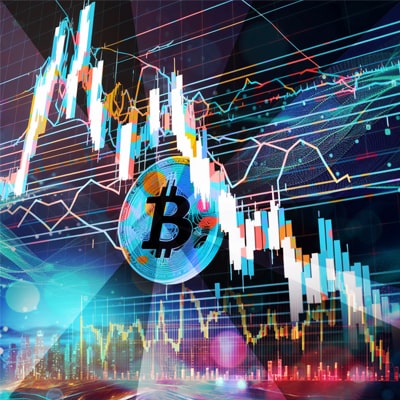Crypto Market Makers: Liquidity Saviors or Sinners?
May. 23, 2024. 6 min. read.
1 Interactions
Crypto market makers: essential liquidity providers or manipulative profiteers? Explore their controversial role in shaping crypto markets and prices.
In cryptocurrency trading few things matter more than speed and information. Maybe one thing does: market liquidity. Ever traded a shitcoin with a small market cap, and seen its price crater (or moon) in a matter of minutes? In most cases, that is the result of some whale executing a big order, driving the price up or down by supply or demand.
This is where so-called market makers come in. They play a vital role in ensuring exchanges run smoothly by lubricating them with liquidity. But what exactly does liquidity mean, and why are market makers so crucial to crypto markets? Let’s dive in and explore the essential role they play.
What is a Crypto Market Maker?
A crypto market maker can be defined this way: it’s a person or financial entity who stands by to buy and sell a particular cryptocurrency on a continuous basis at publicly quoted prices. These are the prices found on the order books of centralized and decentralized exchange. Market makers place orders on exchanges to buy and sell cryptocurrencies like Bitcoin, Ethereum, or smaller coins. When they do this, they ensure there is sufficient liquidity – meaning other traders can easily enter or exit positions without causing drastic price movements.
Market makers profit by capitalizing (some say exploiting) the difference between the bidding price and the asking price. This difference is known as the bid-ask spread.
For instance, a market maker might quote a bid-ask spread of $99/$100 for Bitcoin. This means he is willing to buy Bitcoin at $99 and sell it at $100. If a buyer and seller transact with the market maker as a counterparty, the market maker earns $1, minus their transaction fee. Multiply such small profits by thousands or even millions of transactions, and it becomes a very lucrative business model.
To manage their risk, market makers run (and fine-tune) advanced algorithms and technology to continuously adjust prices based on factors like trading volume, price fluctuations, and market volatility. This high-frequency trading allows them to capitalize on fleeting price discrepancies across different exchanges and currency pairs.
Why are Crypto Market Makers Important?
In the crypto space, market makers serve several important functions.
First and foremost, by providing continuous liquidity, they make it much easier for buyers and sellers to trade without causing sudden, drastic price movements. Imagine if you had to wait for another trader who wants to take the exact opposite position to yours every time you wanted to buy or sell a coin. The market would move extremely slowly.
Additionally, market makers help to stabilize prices and reduce volatility by stepping in to buy when prices fall, and to sell when prices rise. Without them, crypto price charts would resemble seismographs, with prices jumping all over. By tightening spreads and balancing order flow, market makers ‘smooth out’ price action.
Several types of entities engage in crypto market making. Some are individual traders looking for profits from bid-ask spreads. Others are professional market making firms hired by exchanges or projects themselves to ensure sufficient liquidity.
Many exchanges also act as market makers, either openly or behind the scenes. High-frequency trading (HFT) firms and arbitrageurs also contribute to liquidity through their rapid, algorithm-driven strategies. Finally, some token issuers and crypto projects provide their own liquidity to facilitate trading of their coin or token.
In employing market-making strategies, firms typically rely on a combination of advanced statistical models and formulas, ultrafast computers, and automated trading systems.
Popular strategies include:
- statistical arbitrage (simultaneously buying and selling the same asset in different markets to profit from tiny price discrepancies),
- order flow trading (analyzing and trading based on order flow data),
- market-neutral strategies (aiming to profit regardless of whether prices go up or down).
How Market Makers Make Their Money
So how exactly do market makers profit? The most obvious way is through the bid-ask spread. Every time they complete a round-trip transaction (i.e. buying and selling an equal quantity), they earn the spread between their buy and sell prices.
Many market makers also receive commissions or rebates from exchanges for the liquidity they provide. Finally, some market makers generate profits by opening their own directional trading positions based on anticipated market movements.
Example: DWFLabs and $Floki
One of the most well-known crypto market makers are DWF Labs, who usually drive up the price of their client’s assets significantly. Follow their portfolio here on CoinMarketCap. Their most recent success is the $GUMMY token, which peaked at a $250 million market cap.
By accumulating $FLOKI tokens quietly over several months, DWFLabs was able to establish a strong position. They then orchestrated a massive 772% price pump in just three weeks, showcasing their ability to generate substantial returns quickly.

However, market makers like DWFLabs often employ controversial tactics to manipulate prices. By artificially creating new lows, they can starve out retail investors and accumulate tokens at discounted prices. This cycle of pumps and dumps creates a challenging environment for average token holders, who may struggle to navigate the volatility created by market maker activity.
Therefore, when analyzing a crypto asset, make sure to take a look at both the price and the market cap. The higher the market cap, the more liquid the coin will be, and the less volatile in price.

The Good and Bad of Market Makers
An important question arises – are market makers good or bad for the average crypto investor? As with most things, there are two sides to this debate.
On the positive side, the liquidity market makers provide is undeniably valuable. Without it, crypto markets would be highly illiquid, slow-moving, and volatile. Their activity makes it much easier for investors to enter and exit trades seamlessly. Furthermore, competition between market makers keeps spreads tight, allowing investors to trade at fair prices close to the market price.
However, some argue that market makers – particularly large, sophisticated firms – can take advantage of their role for manipulative purposes.
Market makers have a range of ways they can potentially manipulate asset prices. With their large capital reserves and advanced algorithms, they can engage in practices like front-running, where they exploit advance knowledge of pending orders to make trades ahead of other investors. They might also employ quote-stuffing, placing large numbers of buy or sell orders they don’t intend to execute in order to create a false impression of demand or supply.
Another tactic is wash-trading, simultaneously buying and selling the same asset to generate fake trading volume and momentum. Market makers’ ability to set bid-ask spreads also gives them some control over short-term price movements.
The opacity of some market makers’ operations, and their access to information not available to regular traders raises concerns about asymmetric advantages. While not all market makers act maliciously, they all follow the profit motive. This comes with an inherent potential for price manipulation that necessitates robust oversight and regulation.
Conclusion
Crypto market makers are essential actors in the cryptocurrency ecosystem. While not without controversy, these entities – through their combination of advanced technology and trading expertise – help form the circulatory system of the crypto markets we know today.
While they can manipulate markets with their tactics (especially small illiquid markets), most would agree that the benefits of liquidity and more efficient markets outweigh the potential drawbacks. And in most jurisdictions, there are rules and regulations in place to prevent market abuse. While imperfect, market makers are arguably a necessary presence to ensure crypto markets run smoothly.
By providing continuous liquidity, tightening spreads, and balancing order flow, they serve the crucial role of facilitating efficient trading and more stable prices. For any investor to be profitable long-term, understanding how they operate will help them unlock access to the inner workings of crypto trading.
Let us know your thoughts! Sign up for a Mindplex account now, join our Telegram, or follow us on Twitter.

.png)

.png)


.png)






0 Comments
0 thoughts on “Crypto Market Makers: Liquidity Saviors or Sinners?”